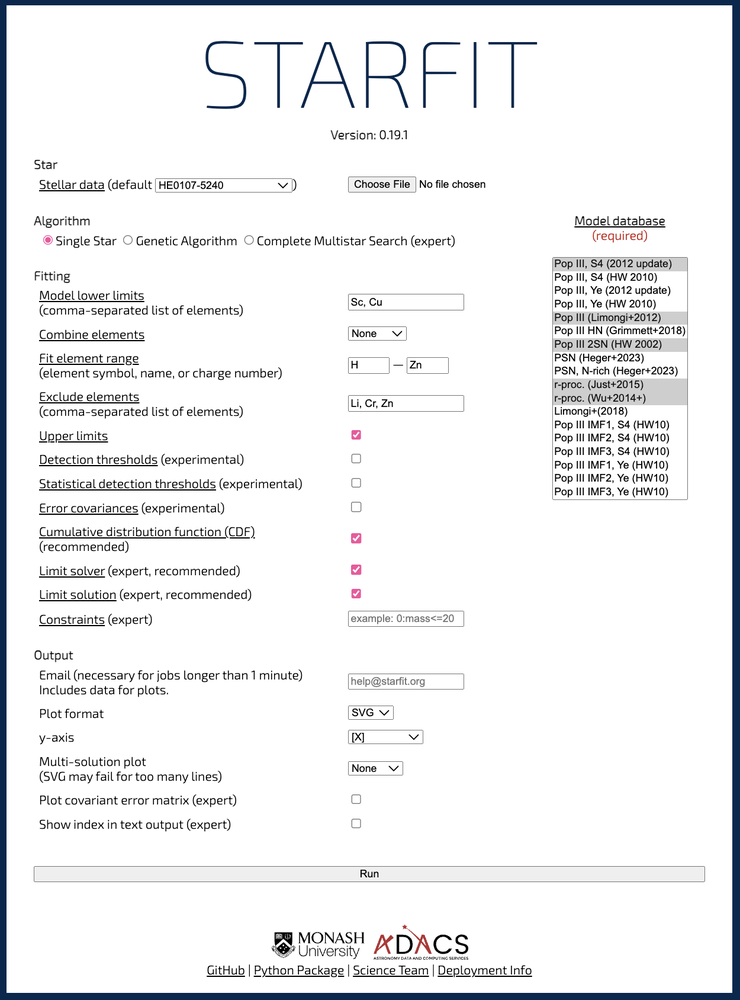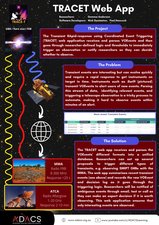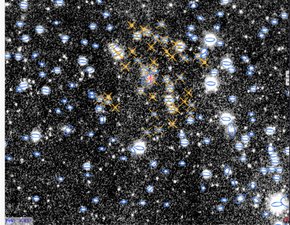
StarFit is an innovative tool that matches observed stellar abundance data to nucleosynthesis abundance patterns from computer models of stellar evolution and supernova explosions. However, over time, the tool had become outdated and incompatible with dependencies, prompting a project to revamp and enhance its capabilities. The science team, led by Prof. Alexander Heger (Monash University), outlined several key objectives: updating the StarFit website, creating a PyPI package for offline use, enabling multiple model databases, and allowing easy addition of new databases. These upgrades aim to make StarFit more accessible and useful to the scientific community.
The StarFit website has been restored to a fully functional state, and a GitHub project was established to facilitate easy replication of the server setup to other machines. This not only aids in testing but also ensures seamless deployment to production servers. Additionally, the StarFit Python package has been modernised and prepared for easy deployment to PyPI. Significant improvements were made, including the introduction of modern software tools and workflows such as linting, formatting, and automated tests.
Moreover, the project successfully implemented the ability to add new databases, broadening the tool’s applicability. Now, multiple databases can be used together, enabling researchers to match combinations of massive star yields with r-process yields.
The revamped StarFit tool now stands as a more robust, versatile, and user-friendly resource for the scientific community. The collaboration between the science team and ADACS developers has been instrumental in achieving these results. As the science team noted, “David and Conrad went well beyond what was expected and fixed/contributed code well outside the initial project goals. They continue to provide support with the further development and growth of the project.”
Project Image: Screenshot of the StarFit online tool.

Check out some of our other projects.

TRACET is a web app that uses VOEvent alerts to decide which transient events to observe with the MWA telescope, streamlining the process of rapid-response observations.

ADACS developed a web-based viewer for the 4HS team to quickly visualise and evaluate survey data, generating HiPS data on demand and helping identify and fix data issues, improving survey quality.

PHANTOM is an SPH code used for astrophysical simulations. ADACS transitioned its test suite to GitHub Actions, allowing the researchers to develop more rapidly. Recommendations were made on how to improve the code's parallel performance.